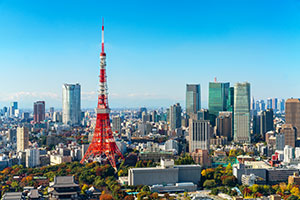15-Nights Discover South Korea With Japan - Small Group Discovery

15-Nights Discover South Korea With Japan - Small Group Discovery
South Korea/Japan
Globus
Vacation Offer ID 1562418
Reference this number when contacting our travel specialist.
Globus
This Small Group Discovery tour of South Korea and Japan reveals the ancient dynasties and authentic delicacies that are tempting your travel fantasies with a spectacular journey through the history, mystery, and modern discoveries. Did we mention the palaces, Hanok houses, and temples to meditate on an adventure like no other. Stroll or roll through Seoul on a rickshaw ride and glide aboard a high-speed train to the city of Gyeongju to peruse its pavilions, pagodas, and parks. Take aim and pull back with an archery lesson or lean into some sage advice at a local Confucius school. From the serenity of Buddhist monks to the savory seafood markets and stunning seascapes, this tour of South Korea will suit you to a tea!Your adventure in Asia continues with a flight to Tokyo where the art of Japanese living is waiting to enchant you. From tales of master samurais and marvelous shrines, the history and legends of this colorful culture is yours for the discovering. Shining shrines and sumptuous dines are served in elegant style only as Japan can deliver.
You’ll also be enchanted by Kyoto’s shimmering golden temples, serene goddesses, and stylish geishas, mesmerized by the natural beauty of Japan’s landscapes passing by your bullet train window, and awed by the view of Mount Fuji from the city’s Skytree tower. A dizzying and dreamy experience in ancient secrets and modern marvels are yours to discover on this sensational Small Group Discovery tour of Japan and South Korea.
Featured Destinations
| Gyeongju | Destination Guide |
| Tokyo | Destination Guide |
| Kyoto | Destination Guide |
| Pusan (Busan) | Destination Guide |
| Seoul | Destination Guide |
Valid Date Ranges
Prices listed are land-only, per person, based on double occupancy and are subject to change and availability. Itinerary and map subject to change.
All fares are quoted in US Dollars.

 949.336.1000 ext. 4569
949.336.1000 ext. 4569

